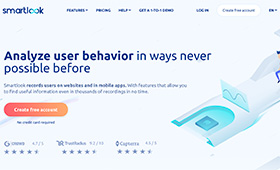How To Use Behavioral Research To Improve Your Product’s UX
Traditional research methods are by no means dead, as data analytics and attitudinal continue to be a favorite. However, in the last couple of years, a different method has come to surface, making product creators reassess how they evaluate their product’s use and success. This method is known as behavioral research.
What is Behavioral Research?
Behavioral research is a recently trending research method utilized to understand the market and user intent. You can use the insights gathered by this method to craft the exact user journey that will generate the best user experience.
In other words, it is a way of researching that analyzes users’ behavior patterns and habits. In psychology, it is commonly used to understand why people do what they do. However, in SaaS, it is a great way to conduct market research and reveal where exactly a product can fit in a user journey.
According to Nathan Maddix, the method is a collaboration of quantitative and qualitative research that helps us understand human tendencies.
Why Behavioral Research Is Growing In Importance in 2021
While behavioral research is not necessarily a new concept in science, it has made a big impact in business in the last few years.
It is becoming more and more popular simply because businesses have gathered essential data from it. Data like:
- How user habits affect sales and engagement
- Critical habits that lead to business/product success
- Online and offline habits that can affect online behavior
In product design and product marketing, behavioral research is being used to understand what problems a product could be a solution to. It is also being used to understand how people are using the product to solve it. This enables businesses to create products that fit in like a puzzle piece.
Behavioral Research vs. Traditional (Attitudinal) Research Methods
When comparing behavioral research to other user research methods, the most common comparison is made versus attitudinal research.
In attitudinal research, you directly ask users about their opinions, feelings, thoughts. Although this might provide you with what people think, it requires a lot of dot-connecting to gather accurate insight. Furthermore, it remains a bit too qualitative for sourcing business decisions.
If you ask me, behavioral research is the superior way of conducting user research because you track a user’s actions, not only what they do step by step, but what takes their attention, where they come from and where they go after.
For example, Web products use a software called Hotjar to see everything a user does with their product. This is done by recording sessions and creating click maps to see what interests users in a page or a tool. These resources are valuable because they provide information that most users can’t word during attitudinal user research.
However, it is always advisable to use both behavior and attitudinal research to reveal everything there is to know about a user journey.
Best Practices of Behavioral Research to Apply to Your Product
Understanding why behavioral research matters and how it compares to other user research methods is one thing; applying it effectively to your business is another.
Here are some of the best practices that I find incredibly useful when performing behavior research:
Pros Know Better: Hire an Expert
Yes, you can learn how to conduct behavioral research from many resources online and offline.
But it might not have the same effect an expert is going to have. You run the risk of not attaining clear insights, and it will consume much more time.
If you have the budget, look for an expert that can oversee the research process. Their experience and knowledge will make your life way easier.
Fit your Product Perfectly
What do users use your product for?
Which value proposition or feature appeal to them more?
Who are your users?
It’s not possible to find the perfect market fit without the perfect market research. Including behavioral research methods in your market research process can provide you with quantitative insights. These insights will then guide you through product development and marketing efforts.
Perfect User Onboarding
The perfect use of behavioral research lies in user onboarding.
Any given business can improve their user onboarding experience with better insights, and what else can provide insights like behavioral research does?
First-time users are looking for a value they will achieve with your product, which will be vital to solving their problem. With behavioral research, you can understand what their Aha moment is, what their pain points in their initial experience are, and if there are any ways to reduce time to value.
Improve Product/Feature Adoption Through the User Journey
User onboarding is not the only part that users struggle with within their product experience.
This is normally because a user hasn’t fully adopted your product even after he or she acquires the core value of your product. They need to be introduced to different features, understand what else they can do with your product, how they can integrate it more into their lives and so on.
Understanding their regular behavior with your product can help you find opportunities to introduce them to different concepts, further educate them, reveal pain points, and discover ways to make their life simpler.
Conclusion
Behavioral research methods and tools can be applied to many areas of your business to optimize performance. In the SaaS world, where competition is fierce, using behavioral research to fully understand a user’s journey with your product can be what sets your business apart from the rest.







No responses yet to “How To Use Behavioral Research To Improve Your Product’s UX”